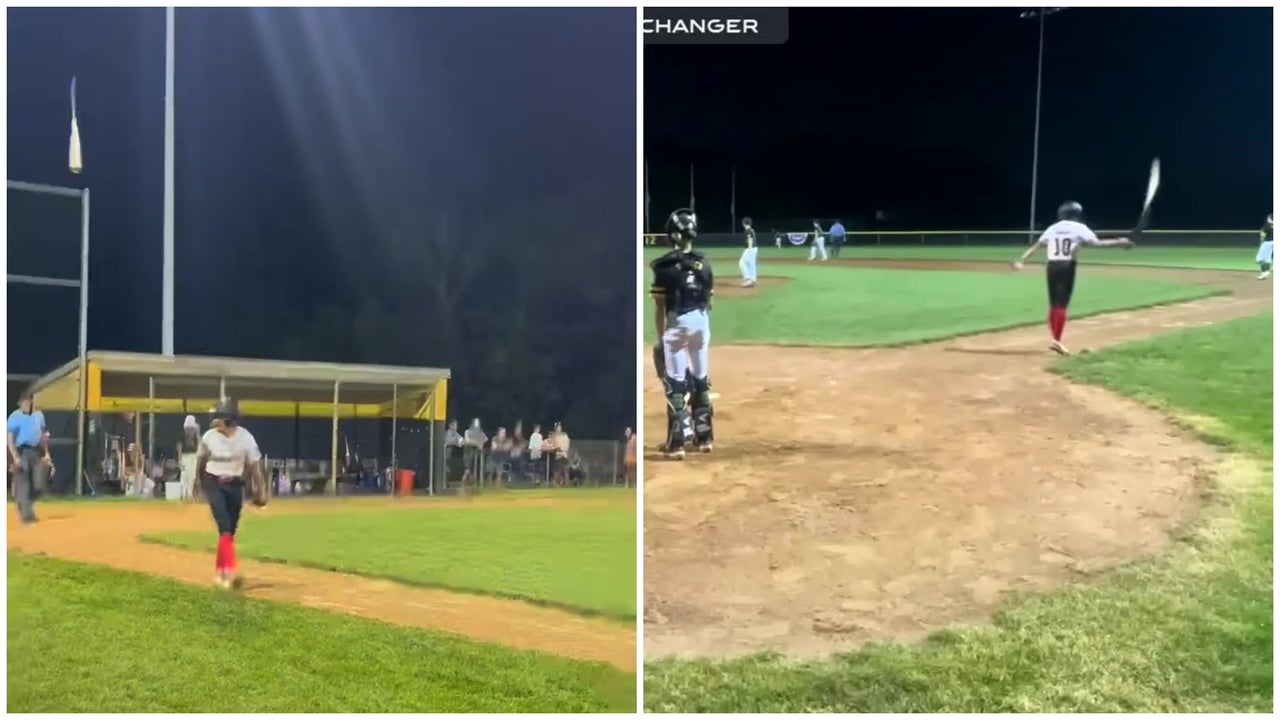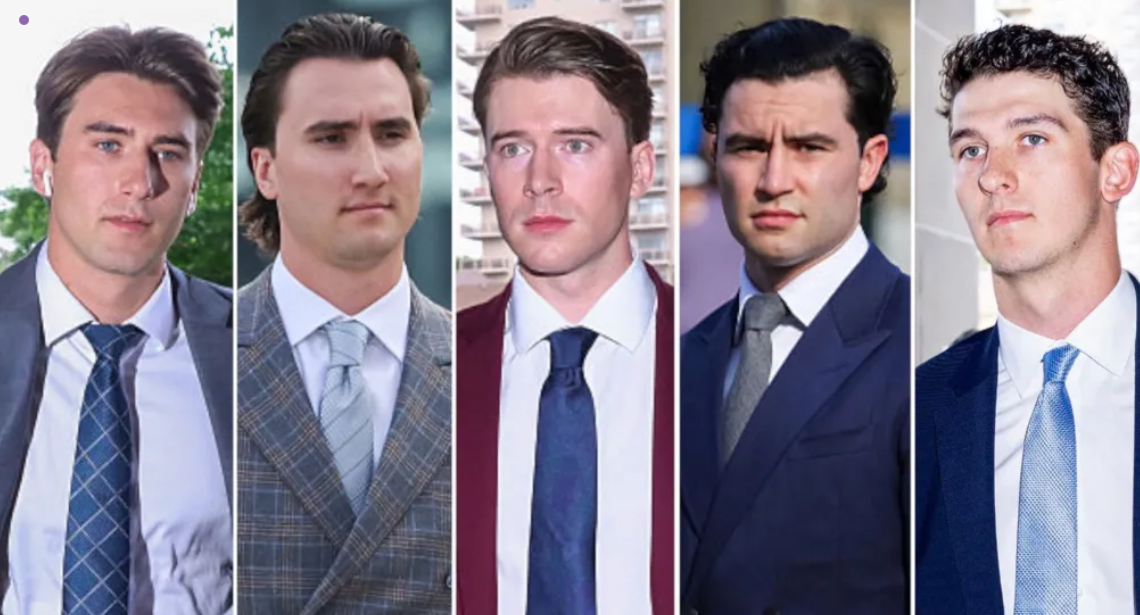George Krissa as the seductive Anatole in Natasha, Pierre & The Great Comet of 1812. The musical has soared higher, shone brighter and dreamed bigger than any might have thought possible.Dahlia Katz/Mirvish
Title: Natasha, Pierre & The Great Comet of 1812
Written by: Dave Malloy
Performed by: Hailey Gillis, Evan Buliung, Divine Brown, George Krissa, Lawrence Libor, Marcus Nance, Heeyun Park, Andrew Penner, Louise Pitre, Vanessa Sears
Directed by: Chris Abraham
Company: Crow’s Theatre and the Musical Stage Company, presented by Mirvish
Venue: Royal Alexandra Theatre
City: Toronto
Year: Runs to Aug. 24, 2025
Critic’s Pick
At the top of Natasha, Pierre & The Great Comet of 1812’s sumptuous set sits a glowing hoop, its shadow dark against the surrounding mirror. At various times throughout Dave Malloy’s electro-pop musical, revived to perfection at the Royal Alexandra Theatre in Toronto, the orb represents the moon, the sun, the wicked fates that have allowed Moscow’s glitziest youngsters to act so recklessly.
But there’s something special about that luminous wheel, a significance far beyond plot. If you stare at it hard enough, you might notice that it’s not quite a circle, but rather a Möbius strip, a geometric phenomenon in which a surface attaches to itself via a half-twist, creating a continuous, infinite loop with only one edge. It’s a shape that is both itself and something else.
In a way, the incandescent Möbius strip near the highest lip of Julie Fox and Joshua Quinlan’s magnificent set is the perfect stand-in for this show: a little magic, a little brainy. With that tiny revamp, what was once a disappointing light cue at the end of the musical is now a beacon of new hope for Canadian theatre – and proof of all that can happen when directors, designers and performers have a little budget, time and space to play with.
The small but mighty Nova Scotia theatre putting community in the spotlight
In early 2024, Natasha, Pierre & The Great Comet of 1812 was the show that could not close. Week after week, the co-production between Crow’s Theatre and the Musical Stage Company extended, picking up word-of-mouth acclaim throughout Toronto.
I was underwhelmed by that production (at least the first time I saw it); so was former Globe theatre critic J. Kelly Nestruck. Chris Abraham’s direction felt frantic and manic, as if one wrong step might send the whole affair into disarray, and Ray Hogg’s equally frenetic choreography made Crow’s Guloien Theatre feel surprisingly cramped, despite (or perhaps because of) the seemingly boundless energy of the performers onstage.
The Mirvish revival, meanwhile, is poised, polished and thoughtful, but doesn’t lose the air of debauchery that in 2024 made Malloy’s masterwork feel like the party of the year (its flaws notwithstanding). In the far more spacious Royal Alexandra Theatre, Abraham has expanded the production – complete with a larger, shockingly tireless ensemble – but infused it with moments of stillness that complement the controlled chaos of Malloy’s book and score.
Divine Brown as Anatole’s scheming sister Hélène in Natasha, Pierre & The Great Comet of 1812.Dahlia Katz/Mirvish
Plot-wise, it’s the same Comet it ever was, an 80-page sliver of War and Peace in which surprisingly little happens – the show is far more about how things feel than what things do. Natasha (Hailey Gillis) is a young woman set to marry Andrey (Marcus Nance), a soldier away at war. When a night at the opera with cousin Sonya (Vanessa Sears) and godmother Marya (Louise Pitre) leads to a chance encounter with the seductive Anatole (George Krissa) and his scheming sister Hélène (Divine Brown), all hell breaks loose, and it’s up to the brooding Pierre (Evan Buliung) to keep the Moscow aristocracy from collapsing in on itself like a pavlova.
Gillis and Buliung, while astounding last year at Crow’s, are more grounded in the larger space, their performances somehow suppler when enjoyed from a distance. Gillis’s airy soprano voice floats through the theatre like a snowflake; Buliung’s growl ably telegraphs Pierre’s biting, scholarly despair. Their final duet, aptly called Pierre & Natasha, is quiet and devastating, effortlessly conversational and note-perfect against a simple piano underscore.
Review: Gnit at the Shaw Festival is an intriguing homage to Henrik Ibsen
The rest of the cast is similarly excellent here, and, for the most part, better than they were in the smaller space – Heeyun Park, who won a slate of awards last year for her work in the small role of Mary, continues to bring a surprising amount of depth and nuance to a character without all that much dialogue. Andrew Penner’s Balaga, as well, is as off-the-wall as ever, with a second-act star turn that’s arguably the highlight of the show.
Vanessa Sears, a newcomer to the production after Camille Eanga-Selenge’s departure for The Lion King, beautifully counters Gillis’s Natasha, finding all the right moments to belt out Sonya’s anguish before quietly reeling it back in. In addition to her clever acting choices, Sears is in fine voice – a pleasant sign of what’s to come later this year when she appears in the title role of Mirvish’s Canadian & Juliet.
Abraham’s padded ensemble, too, is up to the challenge implied by Malloy’s genre-bending, operatic marathon of a show, complete with racing up the aisles of the theatre, climbing and descending a staggering number of staircases and inviting audience members to dance onstage. At times, an aisle seat on the orchestra level of the theatre feels much the same as it does during Circle of Life; while Natasha, Pierre & The Great Comet of 1812 is perhaps less intimate in this staging than it was last year, it’s also sharper, funnier and more tender, and with more leg room to boot.
There’s not much to fault within this monumental remount of the indie musical that only a year ago broke Toronto theatre. Abraham’s revival had a lot to prove – Toronto has been clamouring for it since last spring – and together with Hogg, Fox, Quinlan, music director Ryan deSouza, costume designer Ming Wong, lighting designer Kimberly Purtell and sound designer Brian Kenny, the musical has soared higher, shone brighter and dreamed bigger than any (myself included) might have thought possible.













